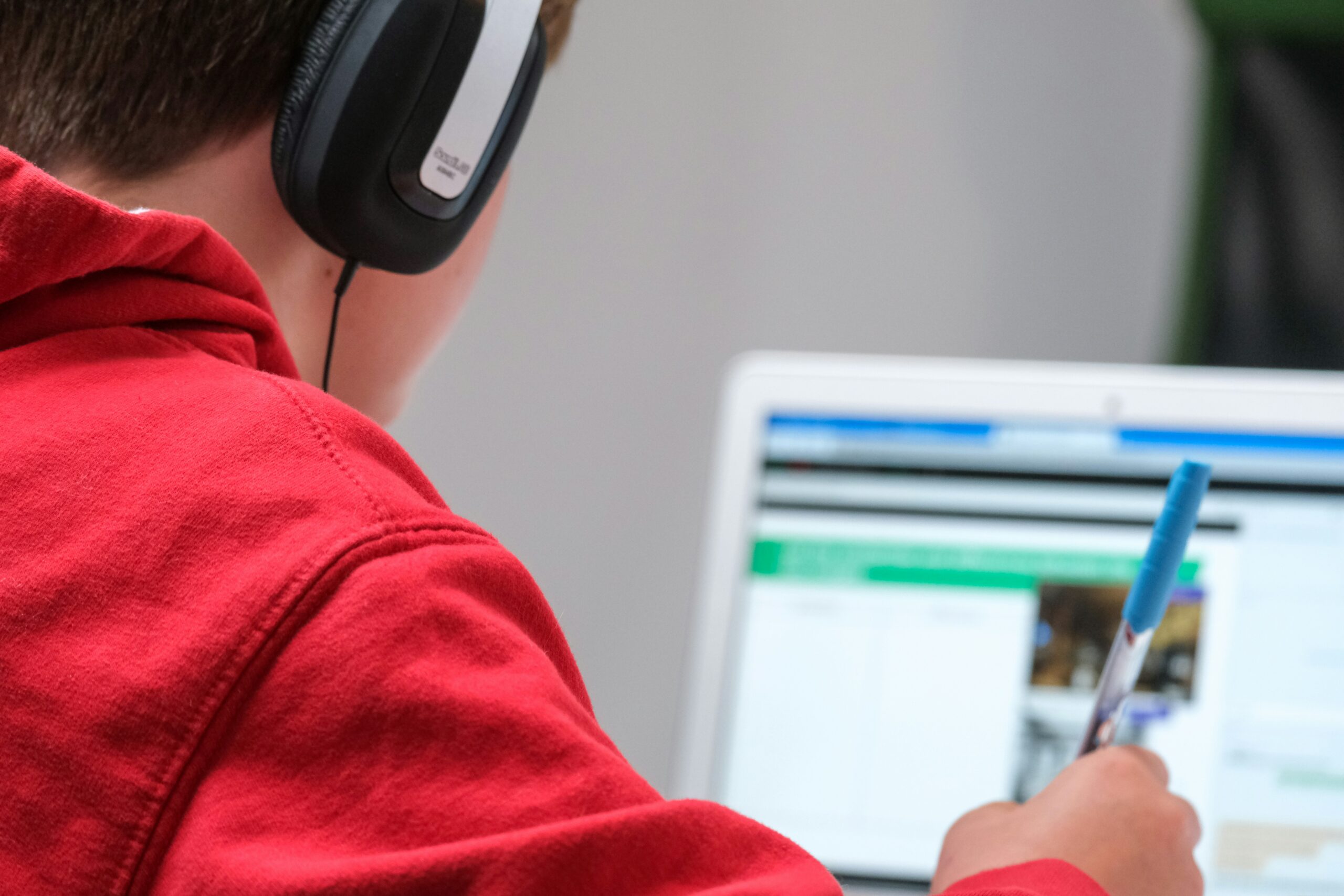Modern education wears a new look these days. Credit goes to committed educators, innovative approaches, and the rise of groundbreaking platforms. A game changer in this mix? Software-as-a-Service (SaaS) in e-learning.
SaaS isn’t just a buzzword—it’s reshaping how people teach and learn. From virtual classrooms to interactive modules, it’s central to e-learning’s evolution. This article will shine a light on how SaaS is truly redefining modern education.
A Fresh Approach to Curriculum Design
The way educators design courses is undergoing a transformation. Traditional, rigid year-long plans are now old news. Why? SaaS platforms usher in an era of dynamism and adaptability.
Teachers embrace these platforms for a slew of reasons. One, they aren’t confined to outdated materials. New information surfaces every day—something important happens in the world, a scientific breakthrough emerges, or a cultural shift takes place. With platforms like Google Classroom, these events become immediate learning opportunities. A teacher spots a pertinent article in the morning; by afternoon, it’s a discussion topic in the class.
Multimedia integration is another step forward. Gone are the days when textual content was the only resource. Today’s learning is vivid. It’s interactive. A history lesson can seamlessly integrate a documentary clip from YouTube. A science class can incorporate animations to explain complex reactions.
But here’s the golden bit: feedback. Earlier, course corrections mid-year were unthinkable. Now, it’s a norm. Students can share what’s working and what’s not. If a particular module seems challenging or a teaching method isn’t effective, changes happen in real-time. It’s collaborative learning in its true essence.Customized Learning Paths
Every student is unique. Their pace, their learning style, their strengths and struggles—it all varies. In a traditional classroom, catering to this individuality is challenging. But with SaaS platforms in e-learning, the landscape changes completely.
One major shift is the adaptability. Instead of a one-size-fits-all curriculum, these platforms offer dynamic content. They analyze a student’s interactions, responses, and progress. Based on this data, they adjust the content. Too easy? The difficulty notches up. Too hard? It dials down, ensuring understanding before moving forward.
Let’s break down the advantages:
- Adaptive learning: Take Khan Academy, for example. It’s not just about watching videos or solving exercises. The platform “learns” from student interactions. If a student aces a math problem, the next might be a tad more challenging. Struggle with a concept? The system offers easier problems or revisits foundational topics.
- Engagement metrics: SaaS platforms often provide real-time analytics. Teachers can see where a student spends the most time, which areas they breeze through, and where they pause. It’s insight that can help tailor future lessons.
- Feedback loops: Instant feedback is crucial. If a student answers incorrectly, they’re not just marked wrong. Many platforms explain the error, offering resources to understand the concept better. It’s about growth, not just grades.
Bridging Geographical Gaps
In a time not too distant, where you lived dictated what you learned. If you didn’t reside in a city with esteemed institutions or didn’t have the means to move, you missed out. But today, SaaS in education is levelling the playing field, breaking down those geographical barriers and ensuring everyone gets a seat at the learning table.
Take platforms like Coursera or Udemy, for instance. They’ve established partnerships with universities of global repute. This means that a student nestled in a village in India can now embark on a learning journey guided by a professor from Harvard. The interaction isn’t one-sided either. Through integrated forums and collaborative projects, students spread across continents are collaborating, brainstorming, and problem-solving together.
Access Beyond Borders
Previously, quality education was a privilege reserved for those living in specific areas. Now, anyone with a stable internet connection and a tablet or computer, even from the most remote locations, can access top-notch educational resources and courses.
A Melting Pot of Perspectives
Imagine the rich discourse when a student from Thailand engages in a spirited discussion with a peer from Kenya. It’s not merely academic knowledge being exchanged—it’s life experiences, cultural insights, and diverse worldviews enriching the academic fabric.
Cost-effective learning: The allure of studying abroad has always been there, but the associated costs—flights, accommodation, daily expenses—can be daunting. SaaS slashes these costs, making global education more accessible and affordable.
Flexible learning schedules: Whether you’re an early riser or someone who feels most productive at night, SaaS platforms cater to your rhythm. With the availability of recorded sessions, students now have the flexibility to learn at their own pace, on their terms.
Steps to Leverage SaaS for Your Educational Institute or Facility
SaaS is a big deal in today’s schools and colleges. They help students learn better and let schools do more. If you want to leverage SaaS for your educational institute, here’s a guide to get you started.
Find Out What You Want
Start by thinking about what your school needs. Do you want to reach more students from different places? Or let students learn when they want? Knowing what you want helps a lot. For instance, Pine Valley College wanted more students from other countries. So, they looked for learning management systems (LMS) that have good online classes and can change languages easily.
Choose User-Friendly Tools
The best tools are the ones people use happily. So, find tools that are easy to understand and use. For instance, consider options like Seesaw or ClassDojo. They look a bit like the apps people use every day. So, students and teachers find them easy and fun.
Let Students and Teachers Work Together
One of the best things about SaaS educational platforms is that they let people work together, no matter where they are. Pick solutions that let students and teachers share and talk easily. For instance, an LMS like Moodle makes it easy for peers to share ideas, collaborate on projects. This makes e-learning easier and fun for everyone.
Teach Everyone How to Use the Tools
Even if a tool is easy, some people might need help. Make sure to show everyone how to use it. And always be there to answer questions. For example, institutes like Oxford have special classes to teach people how to use tools like Zoom. This helps everyone use the tools better.
Keep Track of Things
Things change. New tools come out. So, always see how you’re doing. Ask students and teachers what they think. Make changes if you need to. The University of Tokyo, for instance, asks students what they think about their online tools. This helps the school pick the best tools and use them in the best way.
The Tech Stack Powering SaaS Educational Platforms
With the emergence of SaaS in education and e-learning, the way we consume educational content has transformed dramatically. But what drives these platforms and ensures their seamless operation? Let’s explore the tech stack underpinning these innovative educational platforms.
Cloud Infrastructure: The Backbone
At the foundation of most SaaS platforms is the omnipresent cloud. It offers unmatched scalability, reliability, and distribution.
Hosting and compute: Cloud services like AWS, Google Cloud, and Azure provide the necessary compute power. They ensure e-learning platforms, whether catering to ten or ten thousand students, remain smooth.
Storage: Lecture videos, interactive modules, quizzes—all these require substantial storage. Cloud storage options, such as Amazon S3 or Azure Blob Storage, come into play, ensuring data remains accessible and secure.
Dynamic Databases: Storing Knowledge and Progress
Behind every student’s progress tracker, quiz score, or course registration lies a robust database.
- Relational databases: Tools like PostgreSQL or MySQL are essential, especially when the platform requires structured data storage, like student profiles and course catalogs.
- NoSQL databases: MongoDB might be chosen for more flexible data needs, such as discussion boards or collaborative projects.
Frontend: The User’s Window to Learning
This is where students and educators interact with the platform.
- Web basics: HTML, CSS, and JavaScript dictate how platforms look and respond.
- Frameworks: React or Vue.js can create those interactive, engaging dashboards or multimedia modules. When a student interacts with a dynamic quiz or a video lecture, it’s often these frameworks at work.
Real-time Communication Tools
Real-time communication is paramount in virtual classrooms.
- WebRTC: Powers real-time video interactions. A live lecture, where students from around the world can ask questions and get instant feedback, becomes possible thanks to this technology.
- Socket.io: Ensures real-time chat features, making group discussions or student-teacher chats instantaneous.
Integration and Expansion: APIs and Middleware
E-learning platforms often need to speak with other tools, from payment systems to external learning resources.
- APIs: For instance, integrating a third-party tool like PayPal for course payments or pulling content from external sources becomes streamlined with APIs.
- Middleware: Tools like Express.js in the Node.js ecosystem make sure that different components of the platform communicate smoothly with each other.
Security: Protecting the Virtual Classroom
In a world where cyber threats are rampant, security is paramount.
- Authentication Tools: OAuth and JWT ensure that only registered students and educators access the platform and its resources.
- Data Encryption: SSL/TLS ensures that every piece of data, be it a submitted assignment or a chat between students, is encrypted and safe from malicious intent.
Startups Using SaaS to Revolutionize E-Learning
The e-learning domain is pulsating with innovation. Startups in this industry envision a more inclusive, personalized, and engaging learning environment. By harnessing the SaaS model, these enterprises are offering scalable, continually evolving platforms that cater to modern education’s diverse needs.
Here’s a look at how different startups are reshaping the educational landscape via SaaS:
| Startup | Core Offering | Unique Value Proposition |
| Knewton | Adaptive Learning Platform | Personalized content recalibrates in real-time, offering foundational lessons before advancing based on learner struggles. |
| Classkick | Interactive Virtual Classroom | Teachers monitor student progress live and address common mistakes instantly. |
| Nearpod | AR & VR-Integrated Learning | Transforms passive learning into an immersive experience, like virtually navigating the Amazon rainforest. |
| Brainly | Collaborative Learning & Tutoring | Global community-driven platform where students worldwide solve tricky problems collaboratively. |
| MasterClass | Expert-Led Niche Courses | Access to industry maestros as educators, like learning filmmaking from Martin Scorsese. |
| Coursera | Diverse Course Offerings | Offers a spectrum of learning from Shakespearean literature to Python programming. |
| Microsoft’s Immersive Reader | Inclusive Learning Tool | Ensures content is accessible for challenges like dyslexia or English as a second language with features like read aloud. |
By integrating SaaS into their foundations, these startups are at the forefront of the e-learning revolution. Through their distinct offerings, they showcase how the boundaries of traditional education can be expanded, ensuring a more personalized and globally collaborative learning experience.
Financial Implications of SaaS in Modern Education
Higher education has long been pricey, often limiting access to those with deep pockets. But with SaaS platforms, this is changing. Platforms like Coursera and Udemy offer a solution. These online giants present courses from top-tier universities at reduced costs. No longer is a degree from an Ivy League school an unattainable dream for many.
The impact of SaaS goes beyond just cost-cutting. It’s about broadening access. Students from different corners of the world can now tap into high-quality courses. It’s not just tech; it’s a shift in the educational paradigm. By offering more personalized and accessible learning experiences, SaaS platforms are leveling the educational playing field. The focus now? Quality education for all, tailored to individual needs.
Conclusion
Tapping into the potential of SaaS for education isn’t just about picking a tool. It’s about understanding the unique needs of your institution, aligning them with the right solution, and continuously iterating for improvement. By familiarizing yourself with the developments happening in SaaS and keeping your institute at the forefront, you can provide a dynamic, engaging, and efficient learning environment. It’s the most cost-friendly approach to fostering a global community of learners, democratizing education, and ensuring that no student is left behind.



